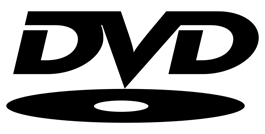DVD Information

The term DVD is an acronym for Digital Versatile Disc or Digital Video Disc. It refers to a type of optical media used for storing data and video content. They are nearly identical to CDs. The difference between CDs and DVDs is that CDs are used to store data and music while DVDs store video and program files. The capacity of a DVD is at least 7 times greater than a compact disc and provides enough room for a full-length feature film. It will support standard as well as widescreen television title views in 4:3 and 16:9 aspect ratios.
It was introduced to a test marketed US in 1997 and developed by Toshiba, Philips, Sony, and Time Warner. They are a consumer-friendly format primarily used for home entertainment for all mediums, as well as business needs, storage backup, and computer software. It had a strong reign over the global audio and video market by replacing videotapes, video cartridges, and laserdiscs within a decade of its debut.
DVD technology is akin to the next generation of the compact disc in that it mirrors its technology. Both share the same dimensions of 1.2mm thickness and 120mm diameter. They have 4.7GB of available space, or 120 minutes. The DVD contains microscopic pits of binary data on its polycarbonate layer, as well as substrate, adhesive, reflective, and lacquered layers. It also has its singular exceptions from the CD.
Its pits of data are smaller and rest closer together than those of a compact disc. This higher density of pits allows a shorter laser wavelength that in turn allows more data to be stored per track. The result is more efficiency in error correction and channel bit jitters. In addition, the disc has a thinner outer layer to let the reading laser pass through the extra layers with more ease.
There are four basic constructions depending on one’s storage requirements: single-sided single layer, single-sided double layer, double-sided single layer, and double-sided double layer. A shift by the drive’s laser is all that is needed to read the next layer, which therefore allows more storage per disc while eliminating the need to switch discs between projects or media entertainment.
Storage capacity does not completely double with the addition of another layer. Rather, the pits on the second layer must be constructed longer and less dense to combat obstruction and errors between layers. Dual and single layer DVD drives have comparable costs but the recordable media itself still has market separation. Costs were initially high but have dropped to reasonable prices.

